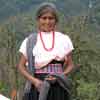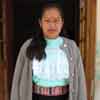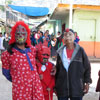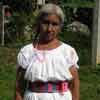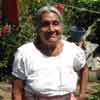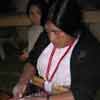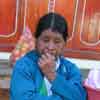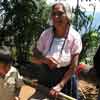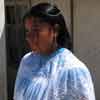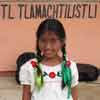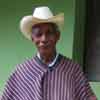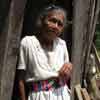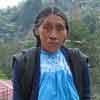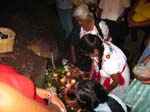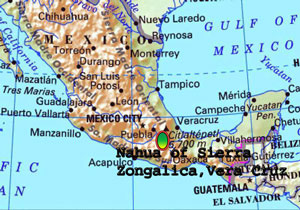|
|||||||||||||||||||||||||||||||||||||||||||||||||||||||||||||||||||||||||||||||||||||||||||||||
|
|
|||||||||||||||||||||||||||||||||||||||||||||||||||||||||||||||||||||||||||||||||||||||||||||||
|
The Sierra Zongalica has recently been an area where the President of Mexico has visited and firmly committed to help this very abandoned region (2005). Road building and the social program “opportunities” are in full swing. However during my trip here in Feb 2006 it was obvious that the major problems that affect many indigenous regions of Mexico were definitely prevalent here. The lack of water, sanitation, roads and money has left these people with little recourse but to migrate in search of work. I spoke, through a translator, to a number of people whose stories were very similar; their kids had left to look for work and did not come back. They plant and harvest in a traditional subsistence way but it is not enough. I saw numerous men and women carrying coffee in heavy bags using the traditional head strap, some would walk up to six miles and then be paid .40 us cents for a kilo of coffee. I purchased coffee at the co-op for $6 dollars a kilo, a little more than $3 dollars a pound. The scenery is amazing and although there is deforestation every where, it was clear that re-forestation was under way. I stayed at a Eco tourism center called Amatitla , which is billed as a rural center for education. They teach how to build methane gas producing “digestors” from pigs excrement, a type of rural stove called “Lorena” fish farming, candy making, traditional medicines, compositing with worms and man other activities. A guide from the center went with me daily and was of important assistance. Contact the center at (in Mexico 01) or (011 US) 278-732-6691. Nahua of the Sierra Zongalica – The Sierra Zongalica is located in the Grand Mountain part of the central region of the State of Vera Cruz. The Zongalica is divided in to two zones the hot zone and the cold zone, these divisions are based on altitude more than any thing else and the costumes are distinct in the two regions. In the cold zone the costume is a black wool wrap skirt, a lace blouse, hand woven belt, a sweater and a reboso. The men wear a muslin pants and shirt with a wool poncho depending on the resource of the person they may or may not wear sandals. In the hot zone it is all white muslin blouse and skirt with pleats on the sleeves and in some cases a light machine embroidery. The mens costume is the same in both regions. In the hot area the costume is disappeasring fast. The few village shown in these galleries were far removed and only a few elderly women still wore traditional clothing. The Sierra Zongalica is inhabited by Nahua speakers who are descendent from the Nonoalco peoples. There are 14 municipalities that form this region of the State of Vera Cruz, part of the Zongalica are in the State of Puebla and are not treated here ( see Nahua of Puebla ( Tehuacan) . As mentioned earlier the peoples of this region have strong ties to the Nahua culture and due to their isolation most (90%) speak Nahuatl as their first language and even n the language of commerce. Traditional healing is alive and well in the Sierra and there is an active group of “curanderos” that live in each community. These curanderos ( healers) use herbs or a type of indigenous chiropractic healing ( hueseros) and spiritual healings. I was able to go with these healers to a traditional ceremony performed in many parts of the Zongalica called Xochical. Xochicali is a ceremony which any one can perform to ask forgiveness of mother earh for any harm caused by last years planning cycle and to ask of permission and blessing on the next agricultural cycle. This ceremony was held in a cave where the healers danced and then set up a small alter and prayed in Nahuatl and Spanish. Crafts in the region include the weaving of wool and cotton clothing, and the weaving palm items for daily use, clay is used to make all the daily plates and of course a comal where tortilla are cooked. The road building in the region will help open it up, I am really not sure how it will help the individual subsistence farmer. But at least they will be able to leave the area faster. To get into the Sierra Zongalica you can enter from the town of Orizaba located at the foot of the largest volcano in Mexico. On your map follow the freeway from Puebla toward vera Cruz and exit at Orizaba. |
||||||||||||||||||||||||||||||||||||||||||||||||||||||||||||||||||||||||||||||||||||||||||||||
|
|||||||||||||||||||||||||||||||||||||||||||||||||||||||||||||||||||||||||||||||||||||||||||||||




